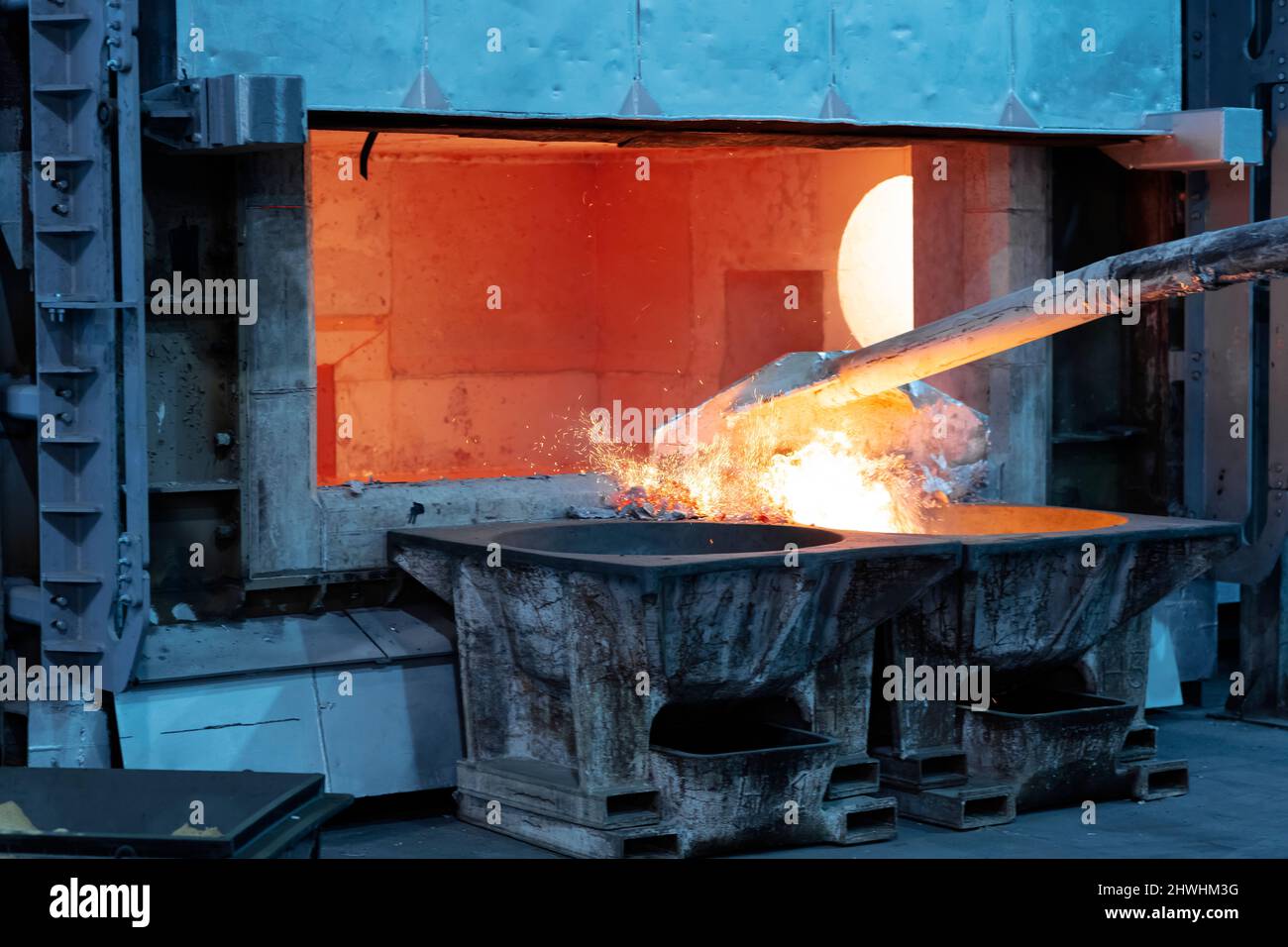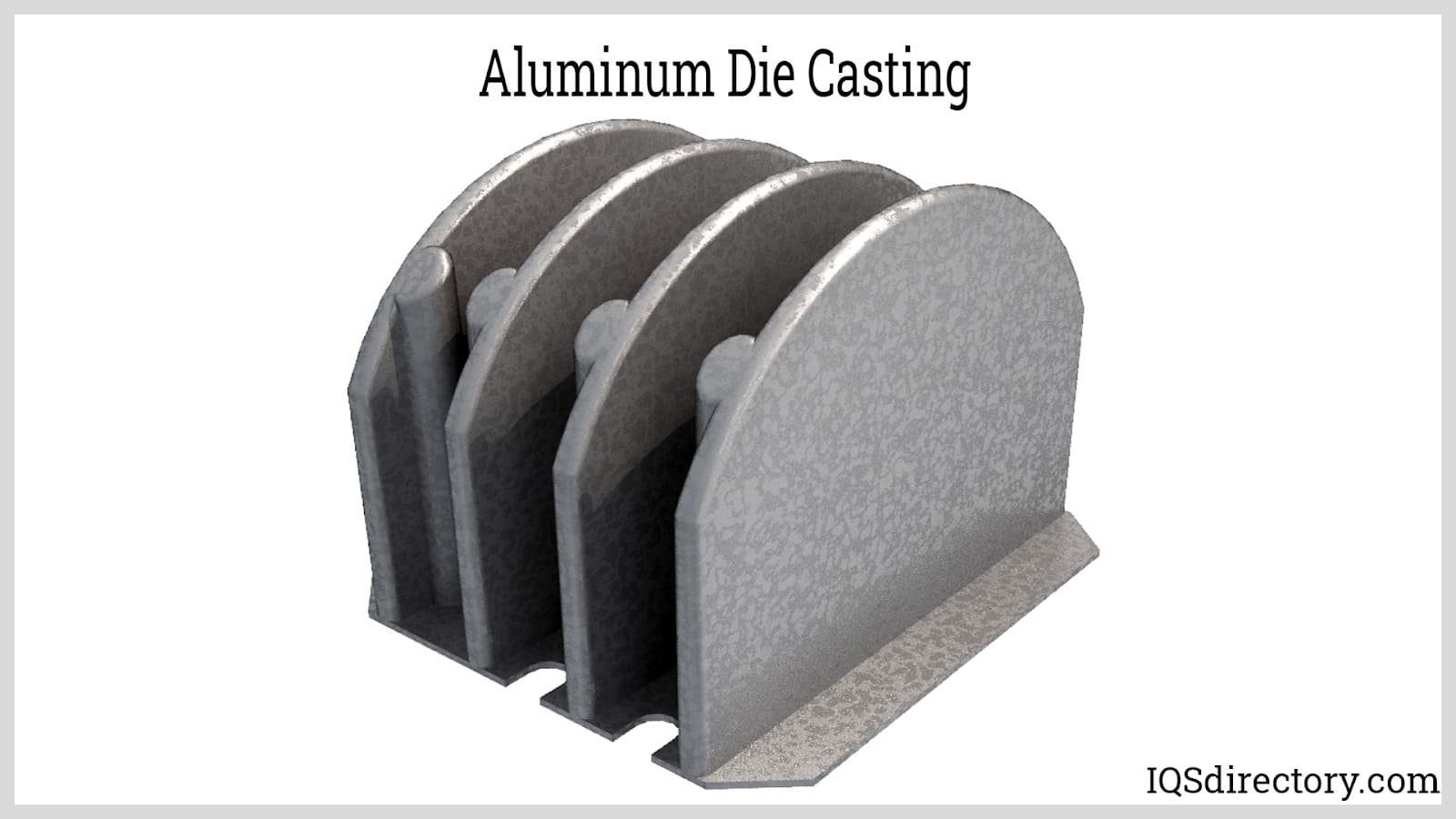Exactly How Aluminum Foundry Contributes to Developments in Aerospace Engineering
Aluminum factories are important to developments in aerospace engineering. They create light-weight, high-strength components that are necessary for modern aircraft. With sophisticated casting techniques, these shops develop complicated geometries that boost structural integrity. Furthermore, the advancement of exceptional Aluminum alloys sustains the market's concentrate on gas effectiveness and sustainability. Obstacles continue to be in the production procedure. Comprehending these factors reveals the profound effect of Aluminum on aviation's future.
The Relevance of Lightweight Materials in Aerospace Layout
As the aerospace industry proceeds to advance, the significance of light-weight materials comes to be significantly apparent. The need for performance and sustainability drives engineers to focus on making use of products that reduce total weight without endangering architectural honesty. Light-weight materials, specifically Aluminum, play a necessary role in improving gas effectiveness, improving haul ability, and boosting the general efficiency of airplane.
The combination of these materials allows for cutting-edge designs, making it possible for manufacturers to develop even more wind resistant forms that can stand up to severe problems. The reduction in weight not just decreases functional prices but also contributes to a decreased environmental impact, aligning with worldwide initiatives toward sustainability in aviation.
Advanced Spreading Techniques in Aluminum Foundries
Advanced casting methods in Aluminum foundries play a crucial duty in aerospace design by enabling the manufacturing of lightweight and accurate components. Innovations in mold style and accuracy casting procedures are vital in achieving suitable performance and architectural honesty. Furthermore, the advancement of light-weight alloys boosts the general performance and efficiency of aerospace applications.
Cutting-edge Mold And Mildew Style
Ingenious mold style plays an essential duty in the efficiency and effectiveness of Aluminum shops, especially within the aerospace sector. By leveraging sophisticated materials and methods, modern mold and mildews can be engineered to endure high temperature levels and stress, ensuring peak efficiency throughout the spreading process. These styles usually include intricate geometries that enable the manufacturing of light-weight yet structurally audio elements, necessary for aerospace applications. In addition, using computer-aided style (CAD) software program promotes exact modeling, allowing shops to refine and simulate mold and mildew designs prior to physical manufacturing starts. This not just improves the quality of cast components but also minimizes waste and lead times, leading to substantial cost savings. In general, ingenious mold design is a keystone of progression in Aluminum Foundry technology for aerospace engineering.
Accuracy Casting Procedures
The efficiency of innovative mold and mildew designs flawlessly integrates with accuracy spreading procedures, which are necessary for generating premium Aluminum elements in aerospace engineering. These processes, consisting of sand spreading, die casting, and financial investment spreading, ensure the creation of complicated geometries with tight tolerances. Advanced methods like vacuum cleaner casting and pressure die casting boost the honesty and surface coating of the end products. Accuracy spreading minimizes product waste while optimizing the mechanical residential or commercial properties of Aluminum, crucial for aerospace applications. Additionally, utilizing real-time monitoring and advanced simulation devices throughout the casting process allows for prompt adjustments, resulting in improved quality control. Jointly, these precision spreading processes setting Aluminum foundries at the center of aerospace innovation, sustaining the sector's demand for reliability and performance.
Lightweight Alloy Growth
As aerospace engineers seek to improve fuel efficiency and efficiency, light-weight alloy growth ends up being an essential focus in Aluminum factories. These foundries use advanced spreading methods to create alloys that give superior strength-to-weight ratios. Innovations in alloy structure, including the consolidation of elements like lithium and magnesium, enable the production of materials that hold up against extreme problems while minimizing total airplane weight. Methods such as die casting and financial investment casting promote the accuracy production of complicated shapes, which are critical for aerospace applications. Additionally, continuous research aims to enhance these alloys for improved mechanical buildings and increased resilience. By focusing on light-weight alloy development, Aluminum shops considerably add to the development of aerospace design, leading the way for much more sustainable and effective airplane styles.

Enhancing Architectural Integrity With Aluminum Elements
Aluminum elements offer significant benefits in boosting structural stability within aerospace design. Their light-weight nature adds to general effectiveness while preserving stamina, which is essential for airplane performance. Additionally, the anxiety resistance residential or commercial properties of Aluminum assistance guarantee the toughness and dependability of aerospace structures under various operational problems.
Light-weight Product Perks
While conventional products frequently compromise weight for strength, utilizing Aluminum parts in aerospace engineering uses significant advantages in structural integrity. Aluminum's light-weight nature contributes to total design effectiveness, enabling even more structured aircraft that eat much less fuel, consequently enhancing sustainability. The material's superb strength-to-weight ratio assurances that elements keep resilience without adding unnecessary mass. This high quality promotes improved efficiency and agility in flight, as well as enhanced payload capabilities. Furthermore, Aluminum's resistance to rust prolongs the life-span of aerospace structures, decreasing upkeep expenses and improving safety and security. As producers increasingly embrace Aluminum alloys, the aerospace industry experiences a transformative shift in the direction of a lot more reliable and effective design remedies that focus on both performance and ecological duty.
Stress Resistance Residences
Although numerous products possess distinct homes, Aluminum's extraordinary stress resistance attracts attention as an essential variable in enhancing the architectural honesty of aerospace parts. This resistance plays a critical role in making sure that airplane can stand up to various functional anxieties, consisting of exhaustion, influence, and environmental conditions. Aluminum alloys, particularly engineered for aerospace applications, display high tensile strength while keeping lightweight features, making it possible for engineers to make a lot more effective structures - Aluminum Foundry. Furthermore, the capacity of Aluminum to sustain cyclic loading without significant contortion adds to the long life and reliability of aerospace components. As innovations continue in Aluminum Foundry methods, the growth of stress-resistant Aluminum parts promises more improvements in performance, security, and efficiency across the aerospace sector, strengthening Aluminum's function as a favored product in modern-day design
Gas Performance Improvements Driven by Aluminum Innovations
As the aerospace market looks for to boost gas effectiveness, innovative uses Aluminum have become an important option. Aluminum's light-weight nature significantly minimizes aircraft weight, permitting reduced gas consumption during trip. This decrease in weight is essential, as even tiny declines can lead to significant renovations in overall fuel economic climate.
Advanced Aluminum alloys, created for enhanced toughness and resilience, allow suppliers to produce elements that keep structural integrity while reducing mass - Aluminum Foundry. Additionally, the integration of Aluminum in airframes and engine elements helps with boosted the rules of aerodynamics, adding to minimized drag and boosted effectiveness
The adoption of Aluminum in aerospace not only fulfills the need for fuel-efficient design yet also lines up with regulatory pressures for lower exhausts. As these developments proceed to develop, they play a substantial duty in establishing new standards for fuel effectiveness, making certain that the aerospace field can satisfy expanding environmental and economic obstacles.

The Role of Aluminum in Sustainable Aeronautics Practices
The raising focus on sustainable air travel practices has actually positioned Aluminum as a vital product in the quest for greener airplane design. Recognized for its lightweight properties, Aluminum substantially minimizes aircraft weight, causing lower gas usage and discharges. Its recyclability even more boosts its sustainability account, as Aluminum can be reused indefinitely without loss of high quality. site link This particular supports a round economic situation within the aviation sector, minimizing waste and resource deficiency.
Innovations in Aluminum alloys have improved their toughness and deterioration resistance, permitting for longer service life and decreased maintenance demands. These technologies assist in the advancement of extra effective airplane frameworks, contributing to general sustainability initiatives. In addition, Aluminum's thermal conductivity plays an essential function in energy-efficient styles, enhancing systems such as heat exchangers. Collectively, these qualities highlight Aluminum's crucial role beforehand lasting aviation, aligning with international efforts targeted at decreasing the environmental impact of flight.
Difficulties Encountered by Aluminum Foundries in Aerospace Production
While Aluminum shops play a necessary function in aerospace manufacturing, they face substantial challenges that can affect manufacturing performance and top quality. One major obstacle is the rigorous quality assurance criteria called for in the aerospace industry. Any issue can compromise safety and efficiency, requiring strenuous examination processes that extend production timelines. Additionally, foundries frequently emulate fluctuating resources costs, which can affect rates and earnings. The complexity of Aluminum alloys made use of in aerospace applications further makes complex the manufacturing process, as precise formulas are crucial for accomplishing preferred mechanical residential properties. Competent labor shortages hinder the capability to maintain top quality manufacturing degrees. Finally, ecological guidelines enforce limitations on emissions and waste management, calling for foundries to purchase sustainable methods, which can be cost-prohibitive. These elements collectively develop a landscape where Aluminum foundries should continually adapt to meet the progressing needs read review of aerospace manufacturing while making sure safety and compliance.
Future Patterns in Aluminum Applications for Aerospace Design
With advancements in modern technology and increasing needs for efficiency, the future of Aluminum applications in aerospace design is poised for substantial makeover. The combination of innovative Aluminum alloys and compounds is anticipated to improve strength-to-weight ratios, resulting in even more fuel-efficient aircraft layouts. In addition, improvements in additive production strategies will certainly enable the production of intricate Aluminum structures that were formerly impossible, maximizing efficiency and lowering waste.

Lasting practices will certainly play an essential function, with an expanding emphasis on reusing Aluminum to lessen environmental influence. The aerospace sector is likely to embrace smarter manufacturing processes, such as automation and expert system, making sure better and precision in Aluminum parts. In addition, cooperations in between Aluminum shops and aerospace firms will foster study and growth, leading the way for brand-new applications that fulfill the rigorous needs of modern aerospace engineering - Aluminum Foundry. On the whole, the future looks promising for Aluminum's function fit the skies
Often Asked Inquiries
What Are the Environmental Effects of Aluminum Production in Aerospace?
The ecological effects of Aluminum production in aerospace include substantial power consumption, greenhouse gas emissions, and habitat interruption. In addition, mining procedures can lead to soil degradation and water contamination, elevating worries about sustainability and environmental balance.
Just How Does Aluminum Contrast to Other Products in Aerospace Applications?
Aluminum supplies an one-of-a-kind mix of light-weight homes, deterioration resistance, and cost-effectiveness contrasted to various other products. Its high strength-to-weight proportion makes it particularly beneficial for aerospace applications, improving gas efficiency and overall performance in airplane design.
What Certifications Do Aluminum Foundry Employees Need for Aerospace Projects?
Aluminum Foundry workers require customized training in metallurgy and spreading methods, together with understanding of aerospace industry requirements. Qualifications in quality assurance and safety procedures are additionally necessary to assure conformity with strict aerospace job needs.
Are There Any Safety Interest In Using Aluminum in Aerospace Design?
Safety worries concerning Aluminum in aerospace design consist of susceptibility to fatigue, rust, and stress and anxiety cracks. Proper therapy and alloy selection are necessary to minimize these risks, making certain architectural honesty and overall safety and security in aerospace applications.
Just How Does Aluminum Recycling Benefit the Aerospace Market?
Aluminum recycling significantly benefits the aerospace sector by minimizing material expenses, decreasing environmental influence, and saving power. This lasting method improves the market's performance while promoting the use of lightweight, high-performance elements in airplane manufacturing.
Advanced spreading methods in Aluminum this content foundries play an essential function in aerospace design by making it possible for the production of specific and lightweight parts. Ingenious mold and mildew style plays a vital role in the performance and performance of Aluminum factories, specifically within the aerospace sector. As aerospace designers look for to enhance gas effectiveness and performance, lightweight alloy development becomes a crucial emphasis in Aluminum factories. Aluminum alloys, specifically crafted for aerospace applications, exhibit high tensile strength while maintaining lightweight attributes, making it possible for engineers to make a lot more efficient frameworks. Cooperations between Aluminum shops and aerospace companies will promote study and advancement, paving the means for new applications that meet the stringent requirements of modern-day aerospace design.